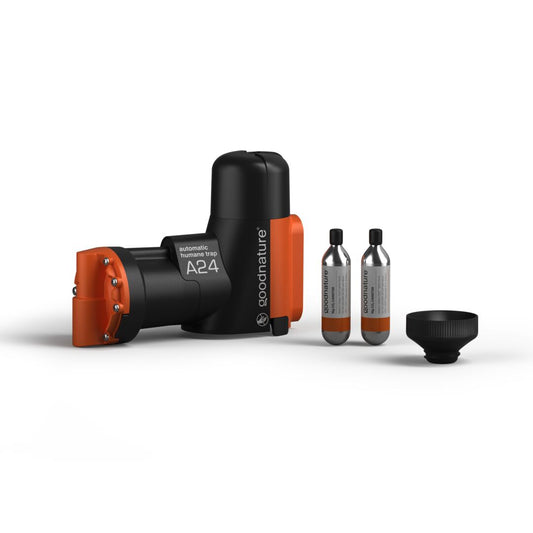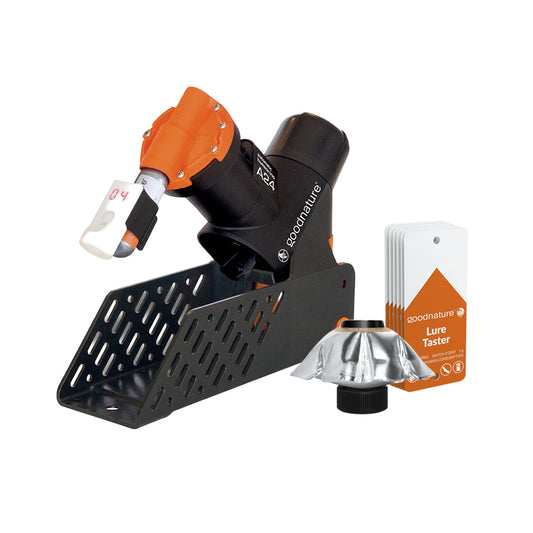
People tend to underestimate mice and rats. They're an easy animal to look down on. We usually associate these rodents with infestations, disease and even property damage. And to be fair, there's good reason for these associations. It's important to take swift action when mice and rats invade your home for precisely these reasons. A few mice or rats can do a lot of harm. Likewise, it just takes two rats/mice to create a population boom within your home.
A Common Reason for Trap Failures
For all of the issues surrounding rats and mice, we tend to forget one particularly worrisome trait. Mice and rats are extremely intelligent animals. After all, we use them for a large number of experiments involving memory and problem solving.
In fact, rats and mice are smart enough to avoid many pest control systems. One of the more common explanations for a rat or mouse trap not working comes down to the rodents simply recognizing a potential danger. However, there are methods of increasing trap success rate.
Pre-feeding
This is where something known as pre-feeding comes into the picture. Pre-feeding is one of the best ways to familiarize even the smartest rat or mouse to become comfortable with your trapping area. What's more, this extremely effective technique is also exceedingly simple to implement.

How to Pre-Feed
You'll want to begin by laying out some dots of your bait or in Goodnature's case our pre-feed lure, around the trap's entrance. It's best to go with at least ten spots of lure. It might feel a bit galling to know you are essentially feeding rats and mice, but remember that this will dramatically improve the rat and mouse trap success rate.
Next, continue this process for the next five days or so. Again, we need to remember just how smart rats and mice are. At this point they've learned that they have an exceedingly delicious food that will always replenish itself. It's like if a restaurant opened up next door which gave away your all-time favorite meal for free. You better believe that you'd be frequenting that establishment.
This is the point where you'll stop laying out the lure around your trap. To go back to our hypothetical restaurant, the rats and mice re-visit the trap looking for their free meal. Low and behold the only source of this familiar food, is now located solely in your trap. Now we have a recipe for success and this is exactly what happens with the rats and mice. But before we go further into why pre-feeding rats and mice is so effective, we should summarize the steps involved.
- Place spots of lure around the entrance to your trap
- Go through this process at the same time every day for five days
- Stop using the lure outside of your trap
- Wait for the rodents to overcome their concern and go into the trap for their meal
Why Pre-Feeding Works So Well
Pre-feeding rat bait works because it respects the intelligence of the rodents and in particular, rats. Rats have lived alongside humans for thousands of years. They've adapted to our habits in a way that few non-domesticated animals are capable of. They are quite capable of noticing that it's not normal for a trap to suddenly appear within a human household or property.
Rats are understandably suspicious about traps. Some will overcome that concern and go for the attractive smell of a lure inside of the trap. However, a lot of rats are quite capable of holding themselves back. A rat trap not working often comes down to this general principle. Rats and mice are smarter than we often give them credit for.
However, pre-feeding turns the tables against them. Rats and mice might start out knowing that a trap is out of place in the larger environment, but pre-feeding with an attractive lure that they eventually deem as safe allows your trap to be successful.
Pre-feeding helps to build up a feeling of trust for rats and mice, as they can identify the food source as safe. They learn just how great the taste of the lure is and start to feel safer in the environment around the trap. And when the lure around the trap disappears they're desperate to get more of it. Desperate enough to ignore any lingering feelings of suspicion as they walk right into the trap.

Some Additional Pre-Feeding Tips
Pre-feeding will is a great tactic to solve any problems with rat and mouse hesitancy or sense of caution. However, there are a few common issues which might continue to complicate things. Competing food sources are the most common issue.
Pre-feeding works because the rat/mouse is looking for a food source to feed on. If they have easy access to large amounts of other food, they won't be as tempted by the lure. If the rodents still aren't going for the trap after pre-feeding then you should look for nearby food sources. Rats and mice chewing their way into packaged food containers is one of the more common explanations. A rat with direct access to a sugary cereal in your kitchen, for example, has no reason to risk sampling your new and unknown lure!
You might also try placing traps and lures in a different position. Rats and mice can cover a lot of room when they're foraging. However, they still might end up missing the lures. In that case placing the trap in a different location might catch their attention.
You should also try to ensure that the traps aren't in areas with heavy foot traffic. They are smart enough to realize that some areas will have human activity during all hours of the day and night. For example, indoors, they might notice that humans are always walking around an area near bathrooms. The rodents would try to avoid that area in favor of quieter locations. Putting traps there will increase the odds of catching the rodents.
Bringing It All Together
In the end, it's important to simply remember that rodents are primarily motivated by an instinct to find food. They also have instincts guiding them to avoid dangerous situations. Mice and rats also have surprisingly clever minds which are capable of recognizing elements which are out of place in the environment. But in the end, they're always going to be tempted by food. It's just a matter of convincing them to give into temptation, providing ample amounts of it to sample and allow them to feel safe, and removing any competing food sources.
To learn more about trapping rats and mice visit our home page for eBooks, trapping tips, and more information about the Goodnature A24.





